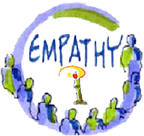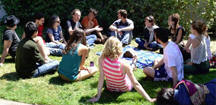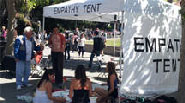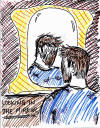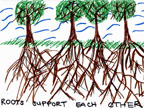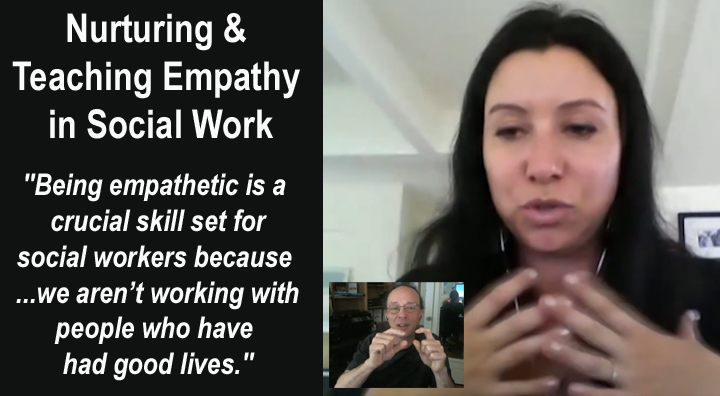USC study feels out empathy in students,
ByShirley Shin, JUNE 17, 2015
"Can humans be engineered to share the feelings of others? That’s the focus of
research by social work professors"
“Empathy requires a cognitive understanding and a felt experience at the same
time,” Zaleski explained. “You’re sitting with someone and understanding and
feeling the pain or whatever emotion that they happen to be going through. In
social work, that’s so much of the beginning part of the work. You need to
engage a patient and put into words how you’re feeling it so the client feels
that you really understand.”
Can Social Work Students Learn Empathy?
By Joelle Ruben, Apr 9, 2015
March/April 2015 Issue:
Social Work Today:
Vol. 15 No. 2 P. 12:
"Instructors and students stress the importance of empathy in the classroom,
even as researchers debate how—and whether—this trait can be learned."
"Say the word "empathy" around social workers and most will
recognize it as a professional "must-have," even if they can't tell you
exactly what it means. Scholars also disagree about the definition of empathy
and what it looks like in social work practice. According to some, empathy
occurs when a person takes on the feelings of another—the sadness of losing a
loved one or the joy of landing a job—as if sharing that experience. Indeed,
the Social Work Dictionary defines empathy as "the act of perceiving,
understanding, experiencing, and responding to the emotional state and ideas
of another person" ...
"According to Zaleski, she and her colleagues recruited 306 graduate
social work students to complete the Questionnaire of Cognitive and Affective
Empathy. This instrument uses a series of questions and Likert-scale rankings
to measure how strongly respondents feel they understand the experiences of
others and/or share in their emotional response. Researchers also conducted
qualitative interviews with 32 students randomly selected from the group."
